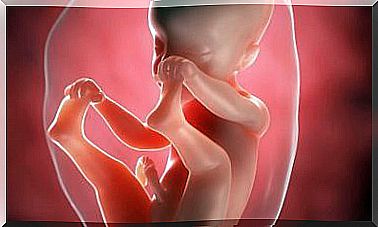What Is Pubic Symphysis Dysfunction In Pregnancy?

Pregnancy is a stage in a woman’s life full of multiple emotions, feelings and physical changes that can be uncomfortable. Each trimester is accompanied by a number of conditions that are of concern to the pregnant woman, even though they are completely normal. At the end of pregnancy, it is common to feel discomfort in the pubic symphysis.
Next, find out what pain is caused by this condition and what you can do to reduce the discomfort.
Meaning of pubic symphysis in pregnancy
The pubic symphysis is defined as the cartilage that serves to unite the two parts of the pubic bone. This joint is usually very strong and calcified. However, hormones such as relaxin are secreted during pregnancy, making this region flexible to give the baby more space.

What is pubic symphysis dysfunction in pregnancy?
Pubic symphysis dysfunction in pregnancy is one of the most frequent pains suffered by a pregnant woman in the last months of pregnancy.
It is known as pelvic pain or pelvic girdle pain and occurs in both the front and back of the pubis. Discomfort may appear sudden, acute, excruciating, or mild and progressive.
It is usually a pain that can disappear in a few minutes, but it can also last for several days, creating uncomfortable situations.
Although the condition is felt specifically in the groin and pelvis, it radiates to the hips, back, and inner and outer thighs. The pain gets worse with some postures and, mainly, at night.
How to Treat Pubic Symphysis Discomfort in Pregnancy
Symphysis pubic discomfort in pregnancy is related to hormonal changes and the pressure of a growing baby. For this reason, it is a condition that disappears with childbirth, although it sometimes takes a few months. However, it is possible to treat this pain with a few recommendations.
take care of posture
Without a doubt, this is the best way to avoid pubic symphysis discomfort in pregnancy. Whether standing or sitting, it is necessary that you try to stand as straight as possible, with your legs in line with your hips.
When sleeping, place a pillow under your knees so that they are in line with your pelvis, and when you get up, do this slowly and gently.

Also, you should avoid carrying heavy objects or doing exercises that increase pressure on this area of your body. The ideal is to always take care of your posture and keep your legs symmetrically aligned.
Do low impact exercises
Sitting or lying down all day can make the situation worse, so do exercises that you feel comfortable with. An example could be swimming, as the body weight is reduced under water.
This way, you will be able to do activities that help to strengthen your pelvic and abdominal area. Stretching is also very helpful, so you can sleep better and recover quickly after giving birth.
Special shoes and straps
Ask your doctor about special braces to reduce pressure on the pelvic bone. They serve to provide greater stability and reduce pain caused by pubic symphysis dysfunction.
Also, avoid wearing high heels, standing for a long time, crossing your legs for a long time, and carrying weight.
Treatments without medication
Medication is the last alternative the doctor should recommend. So try applying hot or cold compresses to the affected area and then determine which one you feel better with.
In addition, a warm water bath helps you relax and prepares you for rest. In more severe cases, try physical therapy and localized massage, for example.
In summary, the symphysis pubis in pregnancy can be affected by changes in hormones, as well as pressure in the uterus. But it is a very common disorder whose discomforts can be relieved by following expert advice. If there is no improvement, you should see your doctor.









